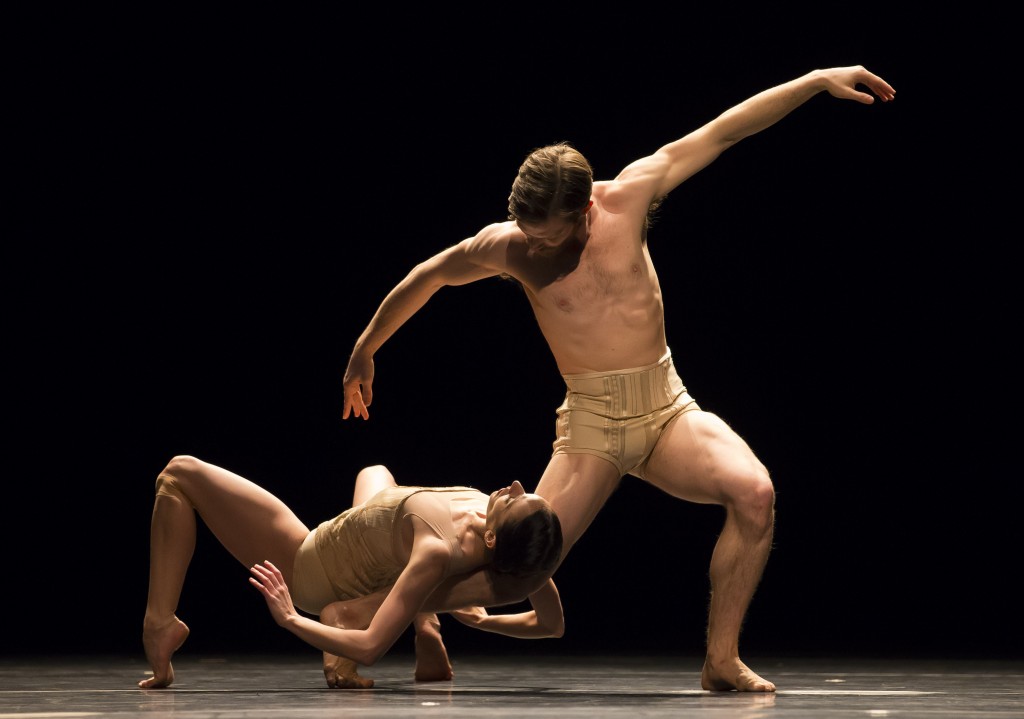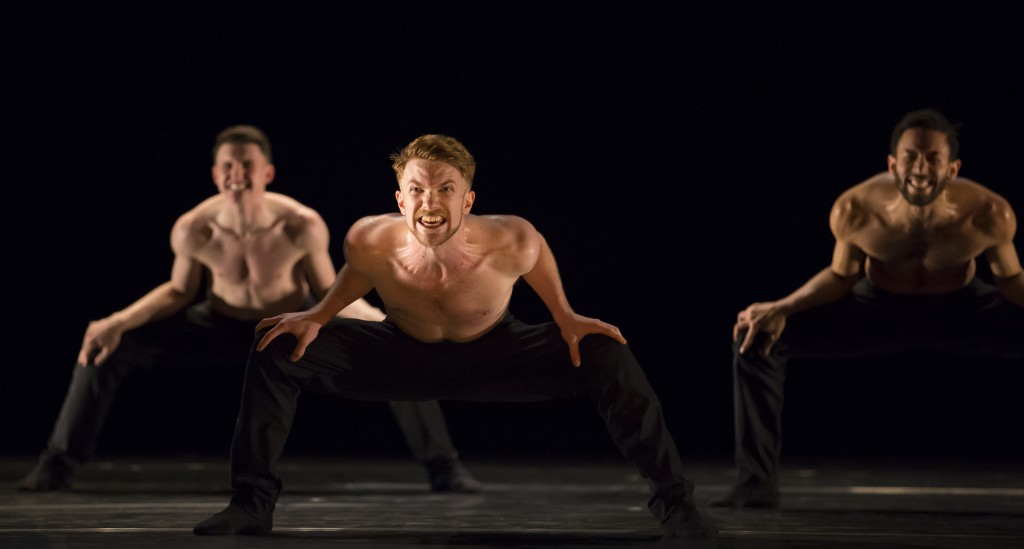
in Petite Mort
by Jiří Kylián. Photo by Todd Rosenberg.
by Catherine L. Tully
Thursday evening Hubbard Street Dance Chicago offered up an evening focused completely on choreographer Jiří Kylián at Chicago’s Harris Theater. Two works the company has performed before (27’52” and Petite Mort) and two are company premieres (Sarabande and Falling Angels).
The program is arranged beautifully—working its way back from 2002 to 1989, letting the audience see the choreographer’s development—but in reverse. First on the bill is 27’52” with its stark set, authoritative music and unusual poses. The title of the work refers to its length, but the force supplied by both the movement and the music draws the viewer in, making it feel much shorter.
The flooring is used in different ways here—sometimes as a cover or wrap for a particular dancer, other times as the impetus for the movement itself. Once it even pulls a dancer along the stage, resulting in a forceful type of floating motion—which is oddly compelling.
Kylián uses the spoken word throughout the work, which in and of itself isn’t particularly unusual, but the fact that the recorded voices are those of the original cast gives it a deeper layer, tying past to present dancers each time it is performed.
Petite Mort is the next Kylián work, and it is an audience favorite. The beginning presents a striking image, with six men on stage maneuvering six foils and six women standing in the shadows behind them looking on. Gender roles are on display front and center here, with the men brandishing weaponry and the women darting in and out from behind voluminous black dresses that slide across the stage on wheels. Although most sequences are danced expertly by the company, the eroticism does at times translate more as a series of poses and steps to be executed rather than raw, visceral movement.

in Sarabande by
Jiří Kylián, with
Jason Hortin, left, and Jonathan Fredrickson
Photo by Todd Rosenberg.
Sarabande begins with a literal bang as six men lay stretched out on the floor, slapping their arms down in unison, as if demanding attention. The women’s gowns are back on display again, but this time they are heavily decorated, hovering over the men–empty–almost haunting. The men roll through a series of postures and poses, ranging from primal, manly screams in unison—to little boys peering at something interesting on the ground.
They dance at times with shirts up around their heads, reminiscent of a miniature Martha Graham costume from Lamentation, and other times with pants down around their ankles. A series of short robust solos is the highlight here, very well executed and supremely powerful.
Falling Angels is the final work of the evening and it features live accompaniment by the steady hands of Third Coast Percussion. While the men of Sarabande seem to alternate between singularity of focus and camaraderie, Falling Angels is a multitasking, tribal marvel. This piece was perhaps the best suited to Hubbard Street, as the women of this company are fierce dancers who hold nothing back.
The choreography is at once aboriginal and contemporary, alternating between African dance movements and a scattershot series of expressions of modern femininity. The women moved in strength—rotating very quickly between shy, sexy, hurried, self-conscious and powerful poses and movements.
Hubbard Street performs at the Harris Theater through March 16th.




